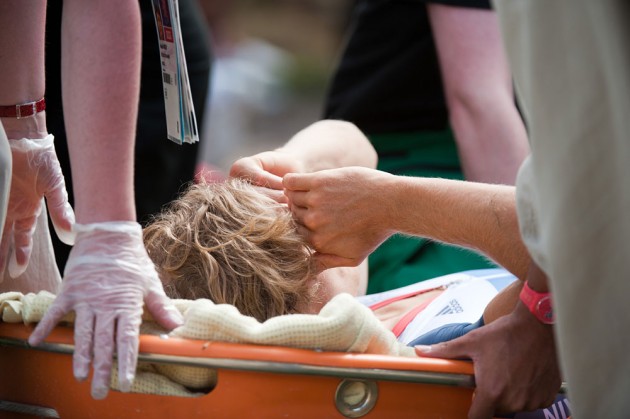Don't put up with it any longer
How to identify the four most common kinds of back pain, and how to treat them the physio way so you spend more time on the bike.
Important: see your GP if back pain symptoms persists. Our expert is physio Lewis Wood, an expert in sports physio and therapy.
>>> How to reduce the chances of mountain bike injuries
As riders we put ourselves through loads of stress and strain, moving the bike around and bombing over rough stuff — here’s how to stop pain in its tracks.
We’re going to say something controversial here: but one of the best ways to relieve back pain is to abandon the hardtail and try a full suspension bike. Don’t get us wrong, hardtails are great fun but they certainly send more vibrations and impacts up to your body.

Excuse me, I need to lie down
1. Dull ache
“I’ve a vague, dull ache around my back, and I’ve no idea why.”
Diagnosis: Referred pain
Back pain may be a symptom of a problem elsewhere in the body, perhaps in the pelvis, hips or an internal organ. Referred pain is usually characterised as a deep, dull and achy sensation that is difficult to pinpoint.
This type of back pain may shift and vary in intensity. The back may be the source of the problem, and pain may refer into the groin, pelvis, buttocks and outer thighs. Cycling probably won’t have any effect or aggravate these referred symptoms.
How do I treat it?
Don’t ride for five or so days. See a chiropractor too, or get a sports massage from a physio.

DIY ice bath
2. Aches for days afterwards
“My back aches for a couple of days after a long ride.”
Diagnosis: Muscular fatigue
During a long ride, your paraspinal (spine stabilisers) or deep gluteal muscles (butt muscles) can get fatigued as you hold yourself in the attack position. Your core stabilisers are overworked as they’re constantly engaged to keep your back in position over the bike.
This may cause delayed onset muscle soreness (DOMS) — exercise-induced micro-damage to muscle fibres, causing acute soreness.
How do I treat it?
Symptoms should improve after a few days, but remedies worth trying are ice baths, massage, and pre-training (strengthening the back).

Skeletor has feelings too
3. Tingling and shooting pain
“Tingling and pain that shoots from my back into my leg.”
Diagnosis: Radicular pain
Known as sciatica, this pain radiates down the back or outer leg, accompanied by shooting sensations. Normally affects one side and may involve tingling and weakness.
Caused by compression, inflammation, injury to a spinal nerve root or spinal disorder, anything that increases intra-abdominal pressure will worsen the symptoms. Once diagnosed, most recover within 18 months without surgical intervention.
How do I treat it?
Stay off the bike for five days, take ibuprofen. If it still hurts, see your GP. It’s best to keep it moving, so light stretching is better than lying in bed reading mbr.

Or maybe your bumbag was done up too tight?
4. Lower back pain
“I lifted my bike out of the car and my lower back hurts.”
Diagnosis: Mechanical lower back pain (LBP)
LBP is a common outcome of minor trauma such as jarring, twisting or wrenching your back; various tissues may be involved and inflamed.
Don’t mistake this type of pain for muscular fatigue; listen to your body. When spinal muscle fibres or ligaments are sprained, they can pull on the wings of a spinal joint, inducing mechanical pain and causing an inflammation. Symptoms vary; pain may be dull or sharp, and recovery can take several months.
How do I treat it?
Take ibuprofen for the pain and inflammation and talk to your GP — you’ll need to stay off the bike and rest.



